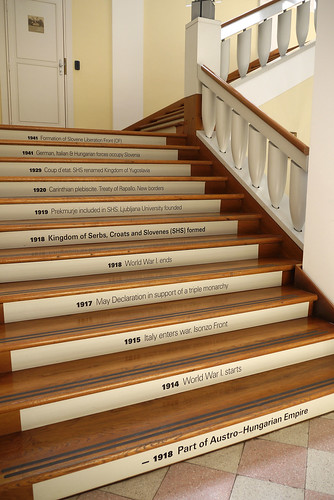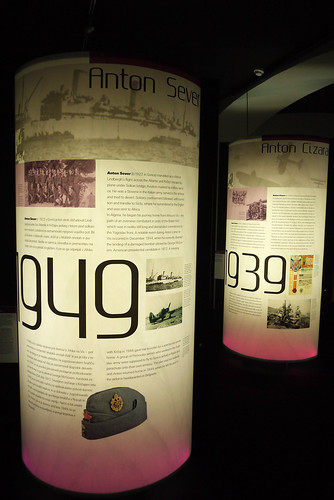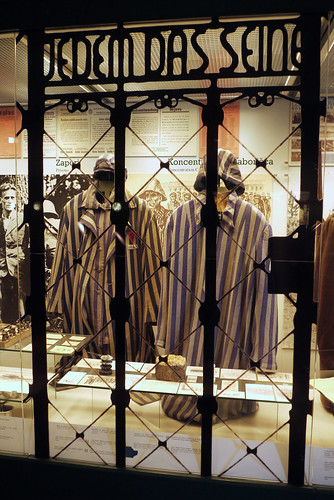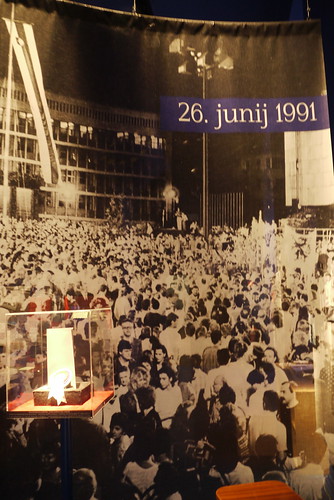Cekin Mansion shown in my previous post, now houses the National Museum of Contemporary History.
In 1996, after several years of preparations, we opened a permanent exhibition, Slovenes in the 20th century. We present in it the most important events and all forms of living and working on Slovene territory, from the start of the First World War to today. With the method of presentation, we want to invoke an emotional and intellectual response from each visitor and encourage them to seek additional answers in other media to the questions and problems that have been presented with the resources of the Museum.
The 20th century is one of the most turbulent periods of Slovene history. During this time, the Slovenes changed states and state arrangements several times; we survived two world wars, were included in the technological revolution and, in the last war, for independence, achieved an independent state.
The political and social framework is the basis of the exhibition narrative, which leads the visitor from First World War trenches through the Kingdom of Serbs, Croats and Slovenes to personal tales and experiences from the Second World War and onward into the period of socialism and industrialisation, the economy in the former common state of Yugoslavia. The exhibition guides the visitor through the democratic turmoil of the eighties to independence in the nineties and life in independent Slovenia. It concludes with accession to the European Union and Slovenia’s presidency of the EU Council in 2008.*
Anthem of the Republic of Slovenia:
The Anthem of the Republic of Slovenia Act of 28 March 1990 specified as the national anthem the seventh verse of the poem Zdravljica (A Toast). It was written in 1844 by the great Slovene poet France Preseren and later set to music by Stanko Premrl.
The anthem reads:
God’s blessing on all nations,
Who long and work for that bright day,
When o’er earth’s habitations
No war, no strife shall hold its sway;
Who long to see
That all men free
No more shall foes, but neighbours be!**
*From a National Museum of Contemporary History leaflet.
** From a signboard in the museum












I’ve always liked seeing messages on stairs like the first image. How fun.
It was a nice way of doing it I hope you have a great holiday
I hope you have a great holiday 
this is a wonderful informative of the recent history of Slovenia… it has a long history of turmoil Cherie… thanks for sharing this with us….peter:)
It was an excellent museum. There is another good one in Ljubljana Castle.
Was it all written mostly in Slovenian?
Slovenian and English